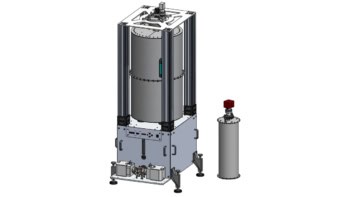Physicists in Germany have used an atomic interferometer to perform the most accurate ever test of the equivalence principle at the level of atoms. Sebastian Fray and colleagues at the Max Planck Institute for Quantum Optics in Garching and the universities of Munich and Tuebingen compared the acceleration of two isotopes of rubidium in the Earth's gravitational field (arXiv.org/abs/physics/0411052). As expected the atoms accelerated at the same rate.
The weak equivalence principle is a cornerstone of general relativity and states that, in the absence of other forces, all objects fall with the same acceleration under the influence of gravity. Experiments that involve bouncing laser beams off mirrors on the Moon have confirmed that the Earth and the Moon accelerate toward the Sun at the same rate to better than one part in 1013. However, some theorists have predicted that new physics might emerge when gravitational experiments are performed with quantum objects such as atoms.
A conventional interferometer works by splitting a coherent beam of light and then recombining the different components at a detector. If the two components are in phase when they recombine, the interference is constructive and the two components reinforce each other. However, if the two components are out of phase, they cancel the each other out. This leads to a characteristic pattern of bright and dark fringes, and this pattern can be used as a “ruler” to measure small distances.
Atomic interferometry is similar but relies on beams of atoms rather than beams of light. Moreover, standing optical waves are used to split and recombine the beams. Atomic interferometers have already been used to measure the Earth’s gravitation to an accuracy of 10-9.
Fray and co-workers began by capturing about two billion rubidium-85 or rubidium-87 atoms in a magneto-optical trap. Then they used laser beams to accelerate the atoms upwards. When the laser beams were switched off, the atoms fell back down under the influence of gravity. The interferometer allowed the team to measure the accelerations, g85 and g87, of both types of atoms.
The team found that (g85-g87)/g85 = 1.2 x 10-7, with error bars of 1.7 x 10-7, which is consistent with the two accelerations being the same, in accordance with the equivalence principle. Fray and co-workers also found that the relative acceleration of rubidium-85 atoms in two different internal states were the same within error bars. The new experiments are a factor of three more accurate than previous tests of general relativity with atoms.



